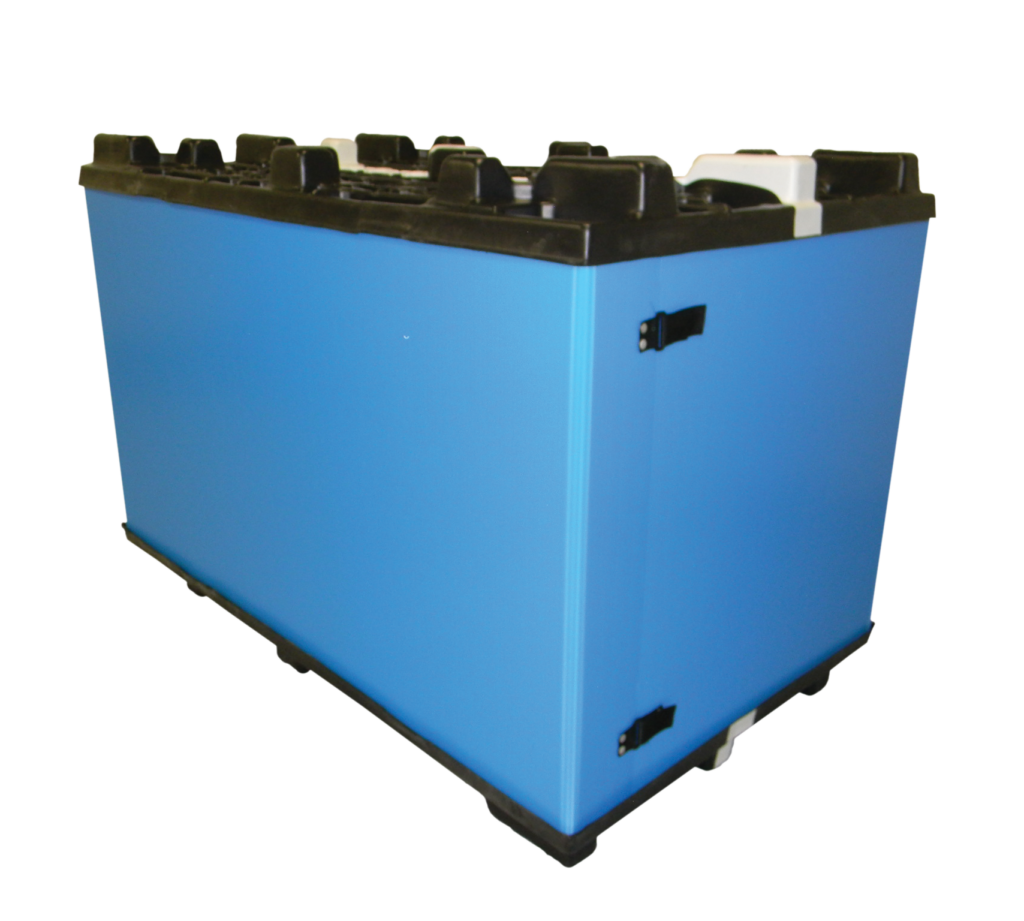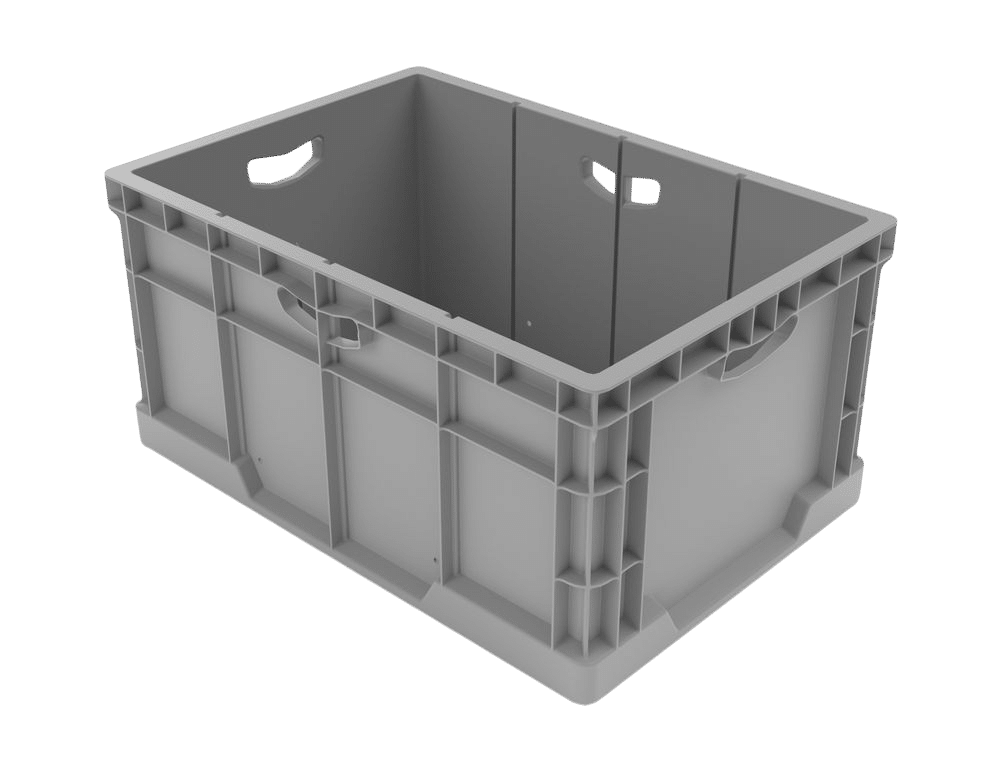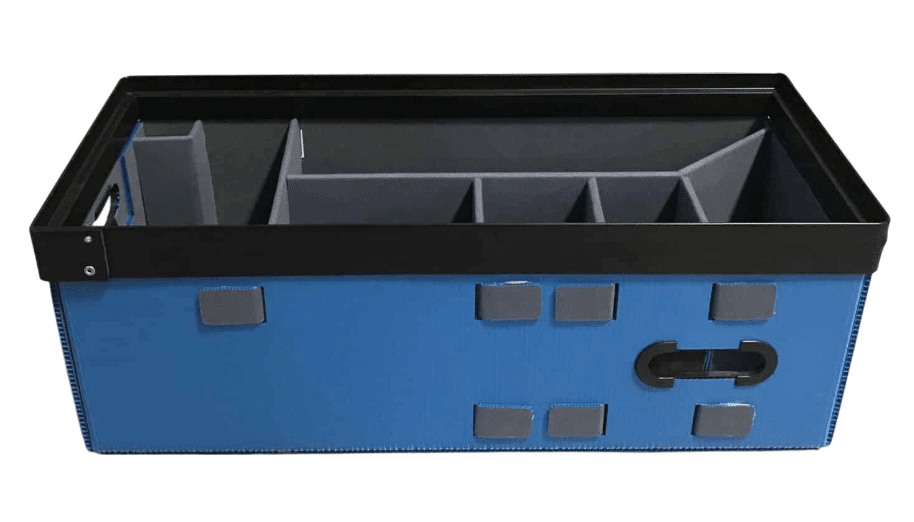In today’s fast-paced business environment, protective packaging is far more than just a container—it is a strategic asset that secures products, minimizes damage, and improves logistics. As supply chains face new challenges and stricter environmental standards, business leaders need solutions that are durable, innovative, and eco-friendly.
This guide explores how advanced, customizable protective packaging drives B2B success, outlining the key features, emerging trends, and practical strategies that are reshaping the industry today.
The Four Pillars of High-Performance Packaging
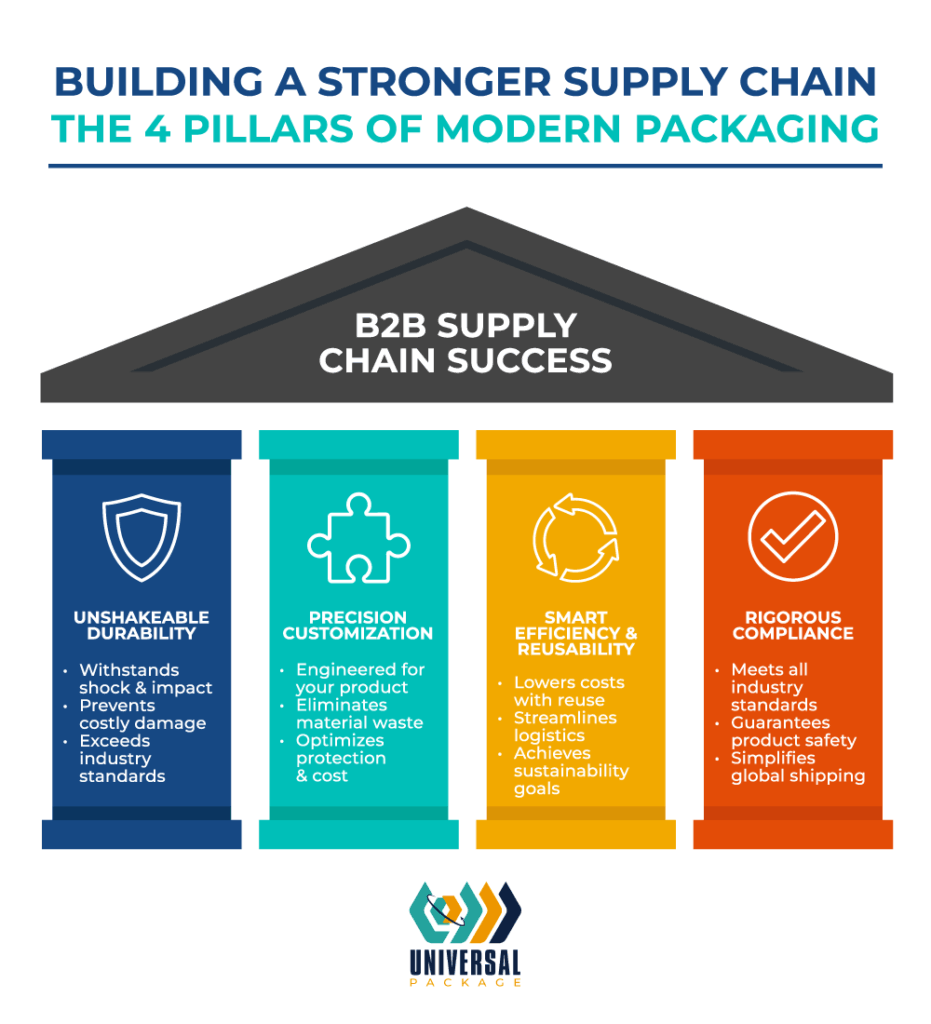
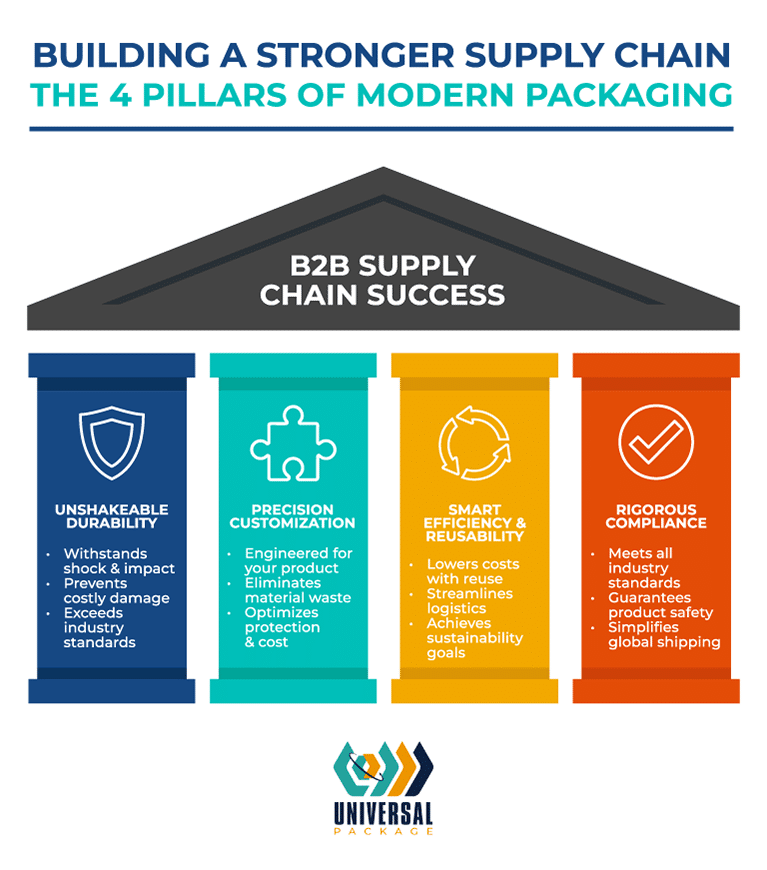
Protective packaging builds on four fundamental elements:
Durability
High-quality materials like corrugated plastic and advanced foams ensure packaging withstands impacts and vibrations. This robust protection helps reduce damage and lower replacement costs. Independent tests following ASTM standards show that these materials perform reliably under rigorous conditions, safeguarding products throughout transit.
Customization
Standard packaging rarely fits every product perfectly. Customized packaging—ranging from tailored foam inserts to engineered dunnage—meets the specific requirements of each shipment. By adapting dimensions and cushioning properties, businesses can:
- Enhance product safety
- Optimize storage efficiency
- Minimize waste by using only the material needed
Each customized solution is designed to add unique value without reiterating common benefits.
Reusability and Efficiency
Reusable packaging options such as durable reusable plastic totes and collapsible sleeve packs offer significant economic and environmental advantages. They:
- Lower reliance on single-use materials
- Reduce waste and disposal costs
- Simplify handling with features like stackability and easy cleaning
Integrating these solutions not only cuts costs but also supports eco-friendly operations.
Compliance and Safety
For sectors like medical, military, and electronics, packaging must adhere to strict regulatory standards. Features such as tamper-evident seals (along with shock absorption and hygienic surfaces) ensure regulatory compliance and reliable performance. Rigorous quality control ensures each package meets or exceeds industry guidelines.
Industry-Specific Packaging Solutions in Action

Different industries have unique challenges, requiring specialized packaging to ensure product integrity, safety, and efficiency. Understanding how protective packaging is applied in various sectors illustrates why a one-size-fits-all approach fails and why customization is a primary driver of success.
Automotive Sector
Automotive components are often heavy, oddly shaped, and highly susceptible to surface damage during transit. Custom foam assemblies, rigid plastic containers, and durable dunnage are essential to protect critical parts like bumpers, gears, and sensitive electronics. These solutions keep items separated, prevent shifting, and reduce costly damage. Furthermore, reusable totes and collapsible sleeve packs are critical for cutting costs and accelerating return logistics within fast-moving automotive supply chains.
- Real-World Success Story: A tier-one automotive supplier was facing repeated chargebacks due to parts being damaged during transit. By partnering with a packaging specialist, they designed and tested an engineered dunnage solution specifically for their components. Within six months of implementation, warranty claims linked to shipping damage saw a significant decrease, strengthening trust with their downstream customers and improving profitability.
Electronics and Appliance Markets
Sensitive electronic devices, from microchips to large appliances, demand protective packaging that mitigates the risks of vibration, electrostatic discharge (ESD), and moisture. Custom-fitted corrugated plastic containers lined with anti-static or shock-absorbent foam provide a secure, stable environment. These solutions are critical for preventing circuit damage, cracked screens, and other malfunctions that lead to expensive returns and warranty claims. Additionally, integrated barcode or RFID labels on package exteriors are essential for tracking high-value goods throughout complex distribution channels.
- Real-World Success Story: A leading manufacturer of industrial equipment integrated smart packaging with wireless sensors to monitor shock and vibration levels during cross-country shipments. By analyzing the real-time data, the company identified recurring stress points in their logistics network. This allowed them to reinforce their packaging and adjust handling procedures, leading to measurable reductions in damage rates and overall transportation costs.
Medical and Pharmaceutical Industries
In the medical field, packaging must do more than just protect; it must preserve product integrity and meet strict regulatory compliance. Pharmaceuticals, sterile devices, and sensitive diagnostic supplies require sterile or temperature-controlled environments. Advanced foams designed for delicate instruments, combined with tamper-evident seals and hygienic, easy-to-sanitize surfaces, are non-negotiable for ensuring patient safety.
Reusable containers that can be thoroughly validated for sanitation also play a key role in maintaining a reliable and safe supply chain for these critical industries.
- Real-World Success Story: A medical device manufacturer needed to meet new, stricter regulatory requirements for product security. They invested in custom packaging with integrated tamper-evident seals and specialty plastics that allowed for quick visual confirmation of sterility. This strategic move not only ensured compliance but also facilitated faster inspections at receiving docks, contributing to measurable improvements in their overall shipping efficiency.
Military and Defense
Military components, specialized hardware, and sensitive electronics require exceptionally robust protection to withstand diverse terrains and extreme handling conditions. Custom, vibration- and shock-resistant foam assemblies are routinely employed to guard mission-critical instruments from damage. These packaging solutions, often housed within impact-tested plastic cases, are engineered to the exact specifications of each item, ensuring they remain secure during transport and ready for rapid deployment in the field.
Innovations Shaping the Future of Protective Packaging for B2B
The world of protective packaging is undergoing a rapid transformation, driven by breakthroughs in materials science, smart technology, and data analytics. These innovations are moving packaging from a simple container to a dynamic, intelligent asset that enhances efficiency, sustainability, and supply chain visibility. Here are the key trends shaping the future of the industry.
1. Sustainable Materials & Advanced Composites
There is a powerful and accelerating shift toward eco-friendly packaging solutions. Responding to both consumer demand and corporate responsibility goals, manufacturers are developing materials that reduce environmental impact without sacrificing performance.
- Eco-Friendly Materials: This includes recyclable, biodegradable, and renewable materials. Recycled composites and plant-based polymers offer performance similar to traditional options but with a significantly smaller carbon footprint.
- Advanced Composites: Breakthroughs in materials engineering have produced lightweight yet incredibly durable structures that combine the best properties of plastics and foams. These composites reduce shipping weight (and therefore fuel costs and emissions) while maintaining robust product protection.
- Minimal-Waste Manufacturing: Innovations are also occurring in the production process itself, with energy-efficient techniques designed to minimize scrap and reduce overall environmental impact.
2. Smart Packaging & Real-Time Monitoring
The “Internet of Things” (IoT) has arrived in the packaging world. Smart packaging integrates wireless sensors and connectivity to provide unprecedented, real-time visibility into the supply chain.
- Condition Monitoring: Tiny, embedded sensors can track and record critical data points like temperature, humidity, shock, and vibration throughout a product’s journey.
- Real-Time Alerts: If conditions deviate from a safe range—for example, if a temperature-sensitive pharmaceutical gets too warm—logistics teams can receive an immediate alert, allowing them to intervene before the product is compromised. This technology is transforming how high-value, sensitive goods are transported.
3. Data Analytics & Continuous Improvement
Smart packaging generates vast amounts of data, and leveraging that data is key to optimizing supply chain performance. By monitoring key performance indicators (KPIs), businesses can move from reactive problem-solving to proactive, data-driven strategy.
- Identifying Weak Points: Analytics can pinpoint exactly where and when damage most frequently occurs, revealing vulnerabilities in a shipping route or handling process.
- Driving Design Enhancements: This continuous feedback loop provides actionable insights that can be used to make iterative improvements to packaging design, materials, and logistics protocols.
- Calculating ROI: Data helps companies accurately measure the return on investment of their packaging strategies, justifying further innovation and refinement.
4. Advanced Testing & Quality Assurance
To ensure new materials and designs can withstand real-world challenges, testing protocols have become more rigorous and sophisticated than ever. This focus on quality assurance minimizes risks before a package ever leaves the warehouse.
- Real-World Simulations: Advanced testing methods include rigorous drop tests, multi-axis vibration tests, and compression tests that simulate the cumulative stresses of a typical shipping cycle.
- Environmental Stress Testing: Specialized chambers are used to simulate extreme environmental conditions, confirming how packaging materials hold up against drastic changes in temperature, humidity, and atmospheric pressure.
- Early Vulnerability Detection: By identifying potential weak points in a controlled lab environment, companies can reduce product loss, protect their brand reputation, and boost customer satisfaction long before a product reaches the end user.
Your Blueprint for a Modern Protective B2B Packaging Strategy
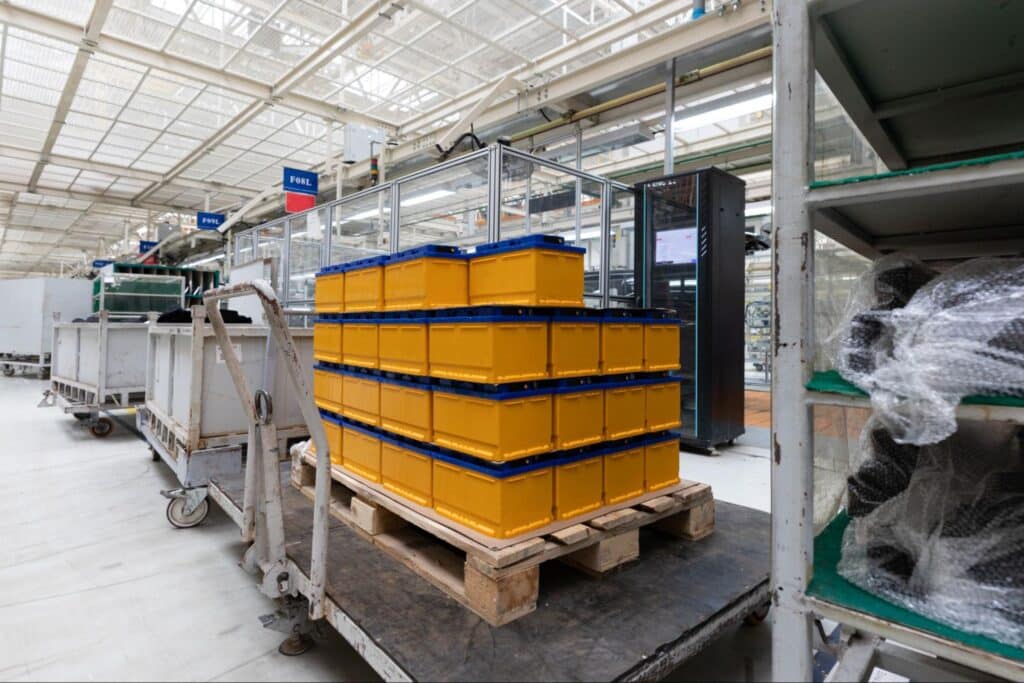
Upgrading your protective packaging requires more than just buying new materials; it demands a strategic, methodical approach. Follow this six-step blueprint to identify improvement areas, implement effective solutions, and create a packaging strategy that delivers measurable results across your supply chain.
Step 1: Conduct a Full Audit of Your Current Processes
Before you can improve, you must first understand your starting point. Conduct a thorough evaluation of your existing packaging and handling procedures to identify inefficiencies, vulnerabilities, and hidden costs. Analyze key performance indicators like damage rates, material waste, processing times, and overall packaging expenses to establish a clear baseline.
Step 2: Define Your Core Objectives
With your audit complete, define what success looks like. Your goals may be singular or multi-faceted. Are you aiming to:
- Reduce product damage and associated warranty claims?
- Lower shipping costs by reducing weight and dimensions?
- Improve operational efficiency with faster packing and unpacking?
- Enhance sustainability by integrating reusable or eco-friendly materials?
- Ensure regulatory compliance for new markets?
Clear objectives will guide every subsequent decision in the process.
Step 3: Partner with a Packaging Expert
Standardizing solutions for diverse product lines and navigating complex materials can be challenging. Partnering with a reliable packaging specialist, like Universal Package, is critical for achieving your goals. Look for a provider that:
- Offers tailored, customizable solutions rather than one-size-fits-all products.
- Demonstrates a strong commitment to quality with industry-tested materials.
- Has a proven track record of solving challenges in your specific industry.
- Prioritizes continuous innovation in materials and sustainability.
An expert partner will help you navigate the complexities of design, testing, and implementation.
Step 4: Develop and Test Custom Solutions
Work with your packaging partner to design and engineer custom solutions that meet your specific product requirements. Before committing to a full-scale rollout, implement a pilot program to test new materials and designs on a smaller scale. This allows you to:
- Validate packaging performance with real-world shipping tests.
- Gather feedback from your logistics and handling teams.
- Make any necessary adjustments before widespread adoption, minimizing risk.
Step 5: Navigate Regulatory and Compliance Needs
Protective packaging must meet varying international and industry-specific regulations related to safety, material composition, and environmental impact. A knowledgeable packaging partner can help you design solutions that:
- Align with internationally accepted guidelines (like ISPM 15 for wood or specific FDA requirements).
- Simplify customs procedures and reduce the risk of cross-border delays.
- Meet rigorous health, safety, or environmental standards required by your industry.
This proactive approach minimizes compliance risks and builds trust with stakeholders.
Step 6: Implement, Monitor, and Continuously Improve
Once your new packaging is rolled out, the process isn’t over. Leverage data analytics and smart packaging technologies to continuously monitor performance. Track your initial KPIs (damage rates, costs, etc.) to measure the impact of your changes. Use this data-driven feedback loop to make informed, iterative improvements, ensuring your packaging strategy evolves with market demands and strengthens your overall supply chain resilience.
Elevate Your Packaging Strategy Today
Protective packaging is the cornerstone of safe, efficient, and sustainable B2B operations. Innovative packaging solutions do more than protect—they drive excellence, reduce costs, and foster trust with customers. By embracing smart technology, advanced materials, and data-driven improvements, you can transform your supply chain and gain a competitive edge.
Don’t wait—transform your operations and unlock exclusive industry insights today. Contact Universal Package for a personalized consultation and discover how innovative, customized packaging solutions can drive your business forward.


